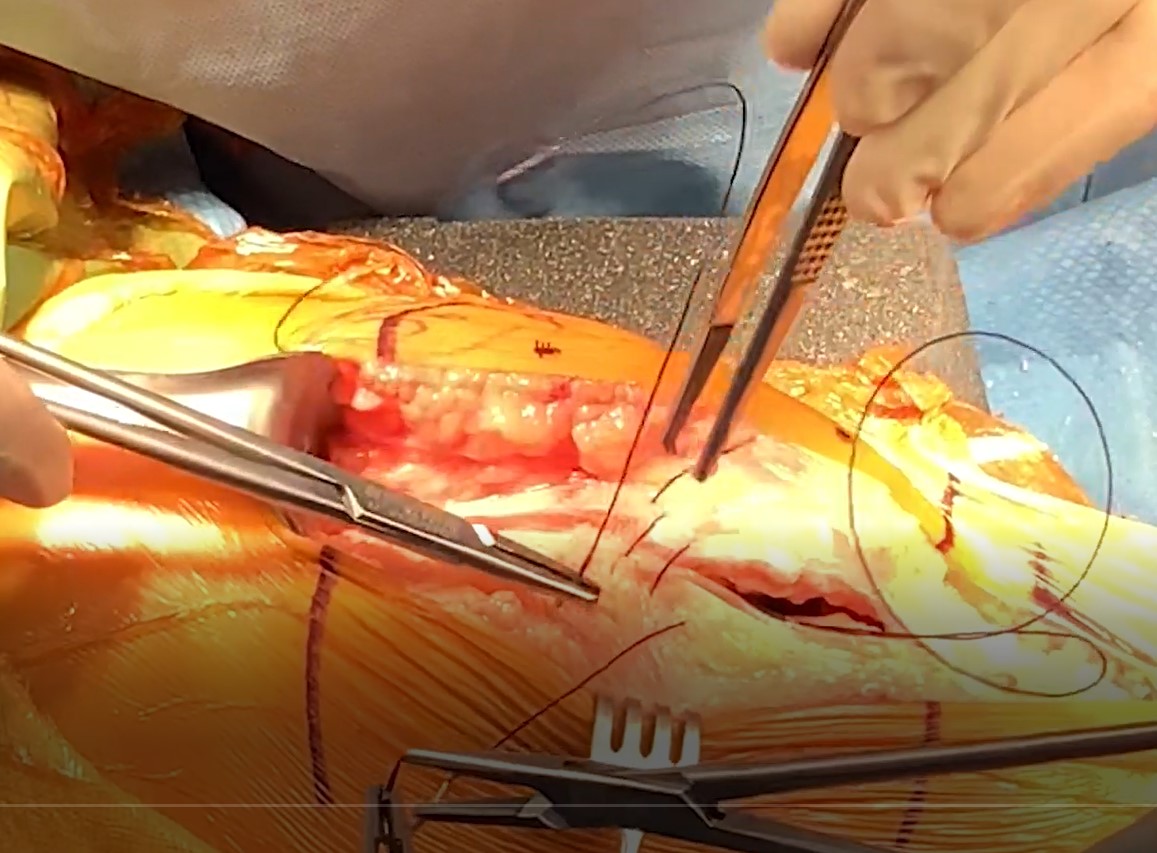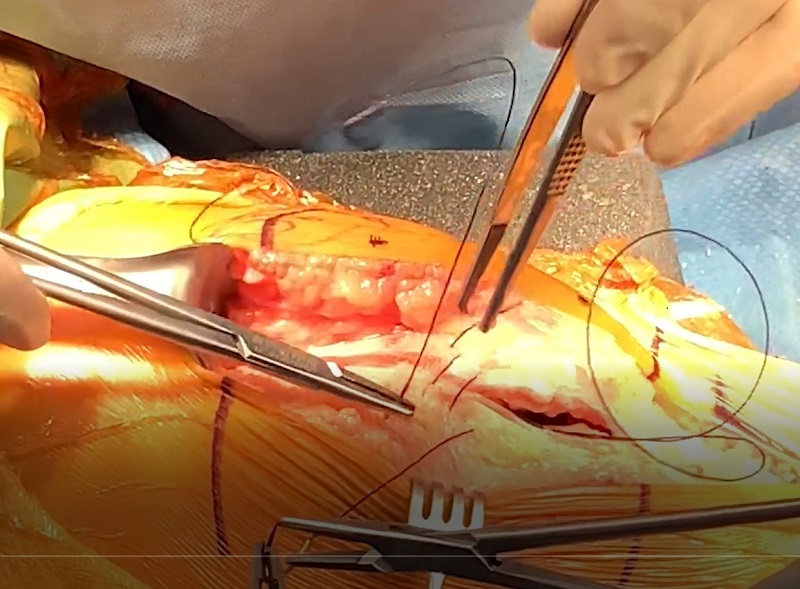A Guide to Using Quill Barbed Suture in a TKA Wound Closure
A Guide to Using Quill Barbed Suture in a TKA Wound Closure

Based on the technique of Dr. Jonathan Danoff, an orthopedic surgeon specializing in primary and complex joint reconstruction surgery.

Capsule Layer
Starting in the middle portion of the wound, using a Quill bi-directional suture, take one arm of the suture, pass the needle until you can feel the resistance where the barbs switch from one direction to the other, also known as the transition or midpoint. Take two loose bites. Repeat with the second arm of the suture in the opposite direction. Take both arms of the suture, tighten horizontally along the length of the wound until the tension is felt.
The primary surgeon and the first assistant can simultaneously close the capsule working in opposite directions, which will help speed up the rate of closure. A 45 cm x 45 cm suture will allow for the entire wound from central aspect to the wound distal and proximal and back to the initial starting point, to be approximated.
Subcutaneous Layer
Using a Quill uni-directional suture, start at one end of the wound, passing the needle through the adjustable loop as the anchor. Continue in a spiral type fashion to approximate the skin together. This is done carefully to ensure there are no gaps that can be created between the closure. The spiral design of the barbs helps to distribute the approximation forces evenly throughout the length of the surgical wound.
When the end of the surgical wound is reached, the needle can be passed deep into the surgical wound and out lateral to avoid creating a knot burden at the proximal aspect of the wound.


Subcuticular Layer
Similar to the previous layer, a Quill uni-directional suture is used to close the final layer. Starting at one end of the wound, the needle is passed through the loop to anchor the suture. The suture is passed in a horizontal fashion, back and forth, to the end of the wound. When the end of the surgical wound is reached, the needle can be passed deep into the surgical wound and out lateral to the skin, cut flush.


